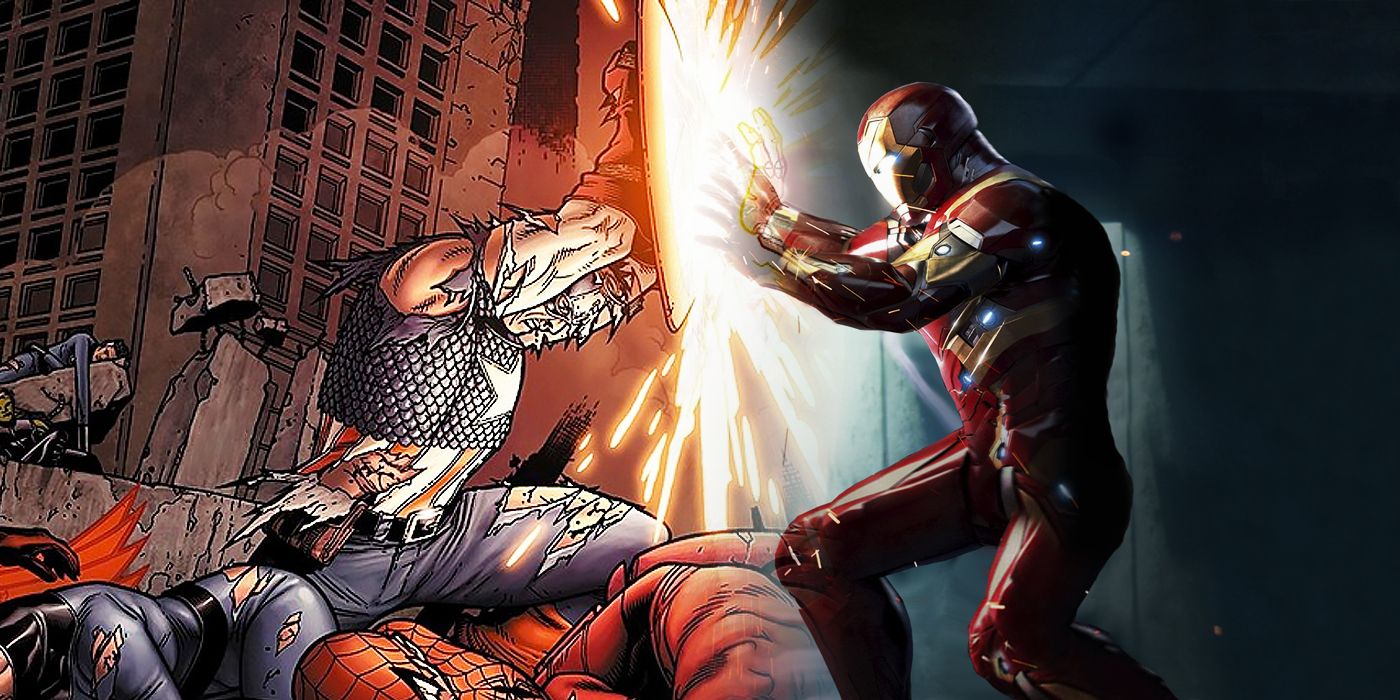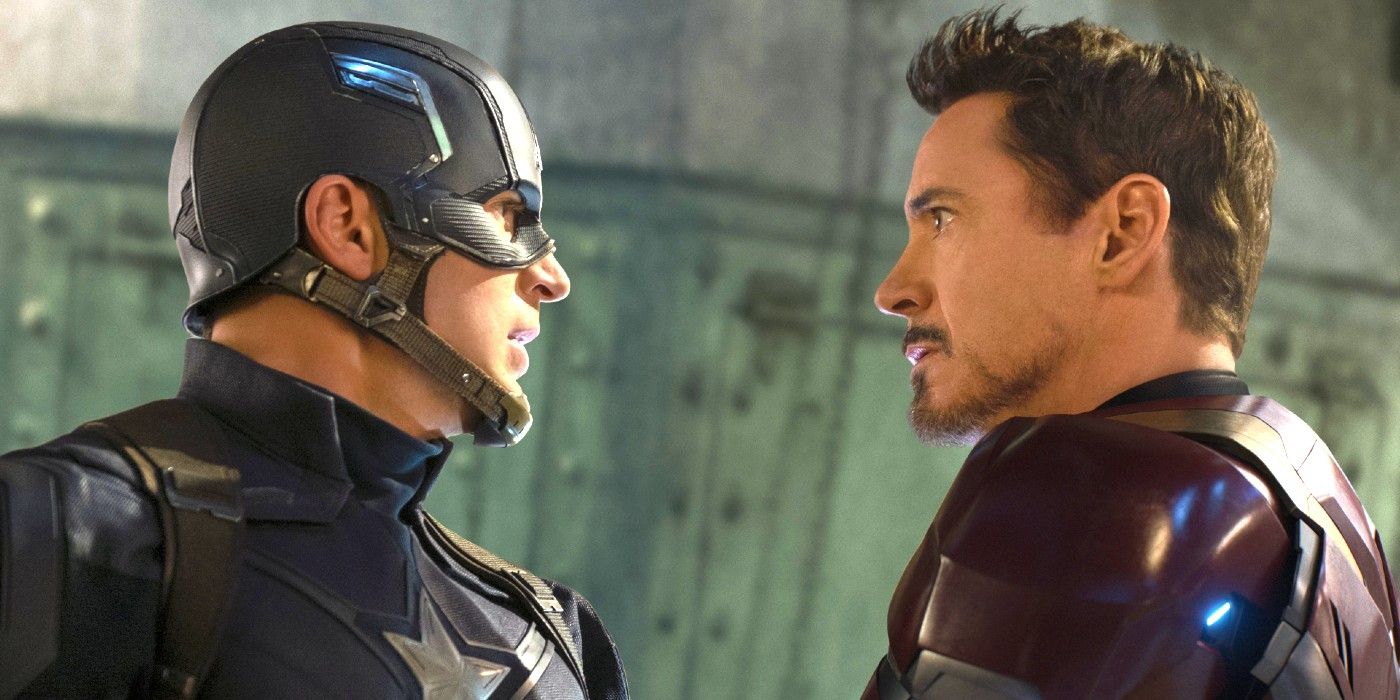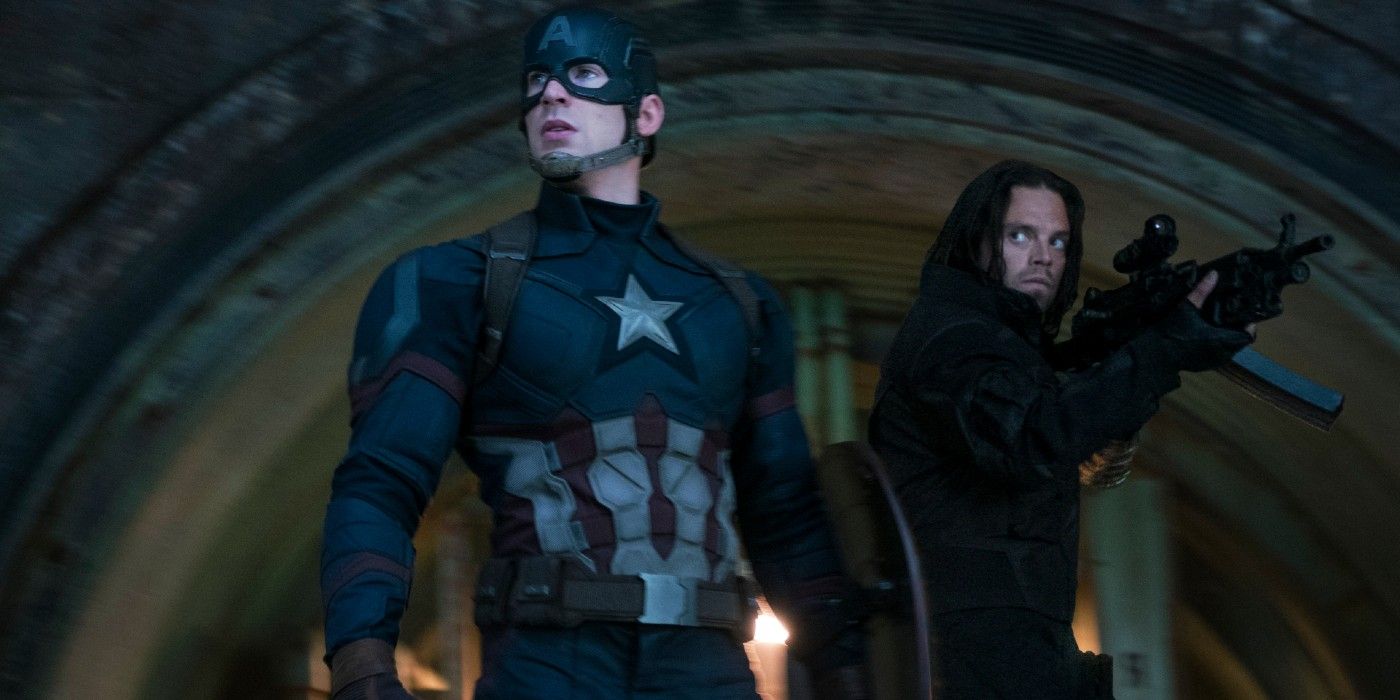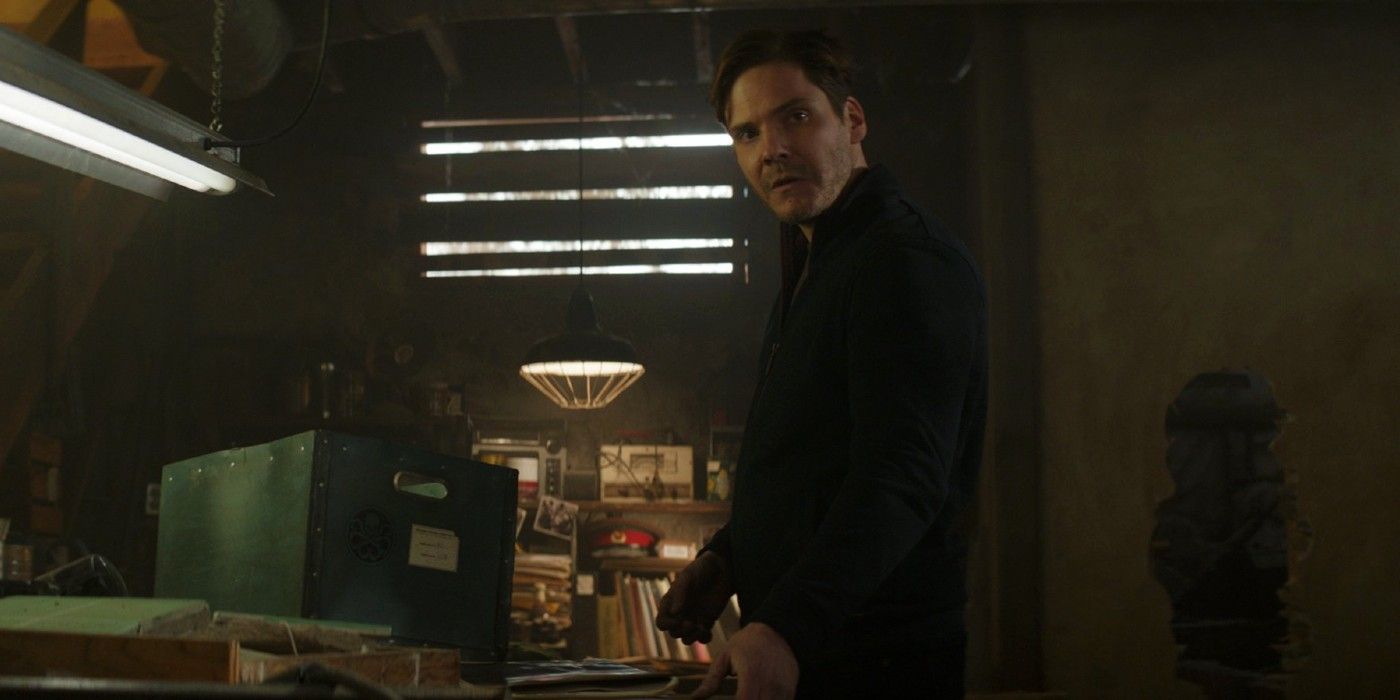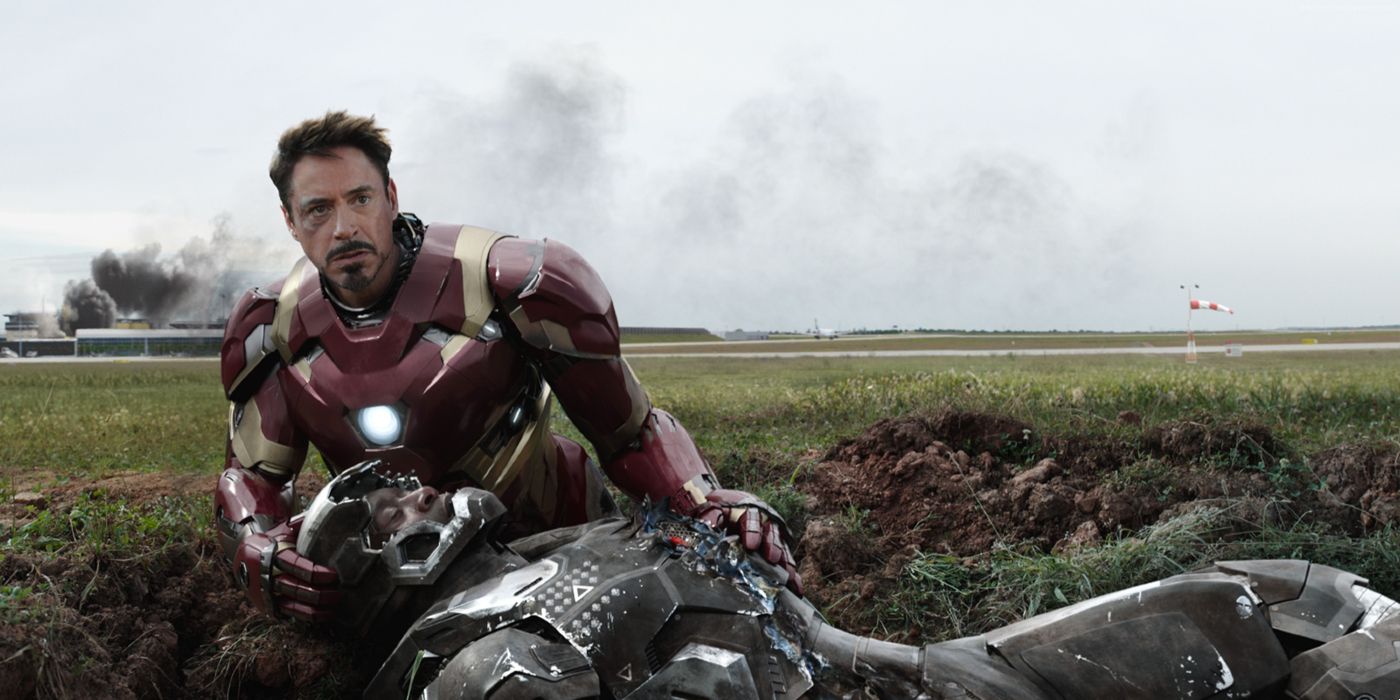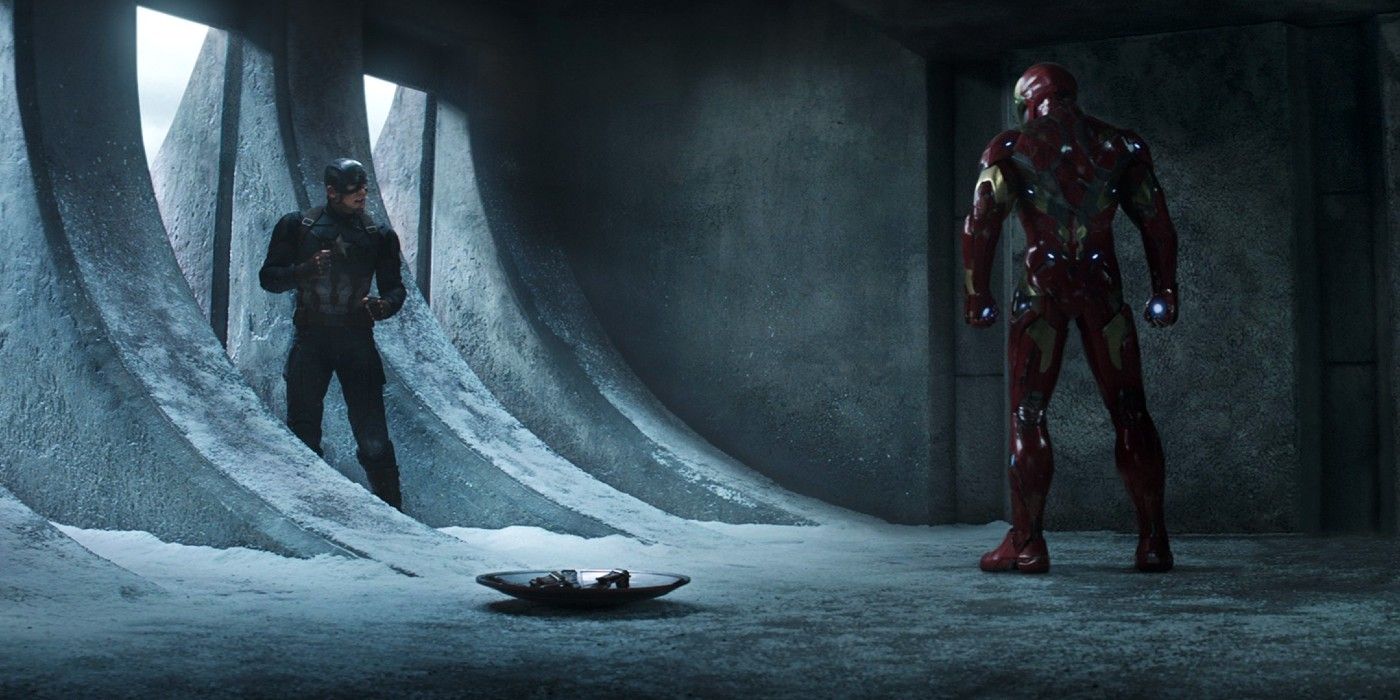Captain America: Civil War hit theatres five years ago this month, in the summer of 2016. The concluding act of the Captain America trilogy appeared to be an extension of the Avengers films with almost every hero from the franchise (barring Thor and the Hulk) appearing alongside new heroes Black Panther and Spider-Man. The film was a massive box office success, but it wasn’t a replica of the comics crossover event upon which it was based. And that’s a good thing.
Faithful adaptations in the MCU are rare; the same characters may not have been introduced, and many of the backstories have been updated or changed from the original source material. The film improves some aspects from page to screen. This is not to say the Civil War comic crossover event doesn’t stand the test of time. It’s still immersive and emotional, and it remains a compelling piece of political commentary. However, the film improves upon the source material by making the story a little more accessible and compact, and by retooling its themes to better suit the MCU's iteration of the characters. It also adds in some welcome humor, which was mostly absent from the intense comic series.
On the fifth anniversary of the Captain America: Civil War release, we look at five ways the film improved upon the comics.
There Was No "Right" Side to the Conflict
In the comics, the Superhero Registration Act was introduced after a group of young aspiring heroes accidentally cause a shocking tragedy. Tony Stark is the act’s loudest supporter, leading the way into a supposedly better new era of superhero accountability. In the film, the act is renamed the Sokovia Accords, which seeks to establish a United Nations oversight committee for the Avengers after Wanda Maximoff (Elizabeth Olson) accidentally kills several civilians.
Tony Stark/Iron Man (Robert Downey Jr.) and Steve Rogers/Captain America (Chris Evans) end up on opposite sides of the debate because Tony feels the need for accountability to assuage his guilty conscience over the destruction caused by Ultron, but Steve is wary of governmental interference and the potential for hidden agendas. (After all, Steve just learned that S.H.I.E.L.D. had been infiltrated by the evil HYDRA in the previous film, Captain America: The Winter Soldier.) Stark had created Ultron, who went on to destroy Sokovia, a European nation where American authorities had no jurisdiction to intervene. But Steve believes preventing the Avengers from being able to intervene in situations like Sokovia is a mistake, because if they hadn’t been there, Ultron might have succeeded in his plan and killed thousands more, if not millions. because there was no higher authority pointing them in a different direction . Both of their viewpoints make sense—the lack of accountability in both the government and law enforcement is a very real problem, so it’s easy to understand Tony’s concern that perhaps he and his fellow heroes shouldn’t be allowed to do whatever they want. But once you’ve signed a contract with one government, you have to play by their rules and serve their agenda, and Steve is understandably suspicious of this.
While the Superhero Registration Act was a good plot device for the comics, the Sokovia Accords was more plausible in the MCU. One of the elements that the Sokovia Accords didn’t adapt from the comics was the requirement that the registrants had to publicly reveal their identities. With a stipulation like that it made little sense for any of the heroes to side with it. The other issue was that many heroes opposing the Act were killed while being apprehended, and those who were caught were imprisoned in the Negative Zone. The swathes of superheroes and supervillains making these arrests knew the fates awaiting their comrades, which makes it difficult to be sympathetic with them. Unlike the Superhero Registration Act, the Sokovia Accords weren’t overtly fascistic. The Avengers are divided on more personal grounds, and because the audience already understands the dynamics between the characters, it creates a gray area that is infinitely more compelling.
It Centers on a Personal Story
The Civil War miniseries was only seven issues long, but several tie-ins with other Marvel titles ran alongside it. These additional issues weren’t essential reading, but they explained the impact of the war on other heroes and civilians who weren’t involved in the main storyline. The film had the advantage of having a reduced pool of heroes to include in the titular war. They all fit on one poster, so while it’s an undeniably stacked cast, it’s nowhere near as sprawling as the comics. In addition, the audience already knew each of these characters and understood why they chose the sides they did.
Since the crossover storyline was adapted as the final installment in the Captain America trilogy, the plot centered on, well, Captain America, and his best friend Bucky Barnes/ The Winter Soldier (Sebastian Stan). By bringing Steve and Bucky to the foreground, the film continued to explore Steve's attempts to save his old friend. Steve's personal feelings of duty and responsibility propelled the story forward. Personal stories are always more compelling, even when superheroes are involved. Had Steve and Tony’s conflict been only politically motivated, it would have been a disservice to their characterization in the MCU and would’ve diminished the emotional stakes for the audience.
The comic crossover was grandiose, and while we know spectacle works for the MCU - Avengers: Infinity War and Avengers: Endgame exist, after all - it would not have been an appropriate choice for a solo hero’s concluding chapter. Steve and Bucky’s screen time was admittedly curtailed in Captain America: Civil War, but their storyline came to a satisfying conclusion.
It Adds a More Compelling Villain
In the Civil War comics event, Tony Stark was an insidious villain. By the end of the crossover, we learn that he orchestrated many of the attacks that forced the implementation of the Act. Tony was practically gleeful about arresting his fellow superheroes and former friends. He coerced Spider-Man into revealing his true identity as Peter Parker. And of course, Tony knew that the arrested heroes were being imprisoned in the Negative Zone by the Fantastic Four’s Reed Richards. There was very little redeeming Tony in the comics. While these actions made for a twisted and shocking character arc, they undermined Tony’s legacy as a hero.
Tony in the MCU films is far from innocent. We've previously discussed Marvel’s villain problem and Tony’s unearned title as a hero, but his actions usually stem from good intentions. In Captain America: Civil War, Tony’s belief in himself is shattered when he comes face to face with the consequences of creating Ultron and of his actions in Sokovia. He not only feels guilty, but also exhausted by the burden of being an Avenger. For Tony, the Sokovia Accords are the only way to achieve “peace in our time.” When Tony leads Team Iron Man against Team Cap, he is doing what he thinks is best for the world, for the Avengers, and for himself. When Tony fights Steve, it’s because he feels betrayed.
The film made the correct decision to introduce a classic Marvel supervillain, Baron Helmut Zemo (Daniel Brühl), as the primary antagonist, and the man who orchestrates the conflict between Tony and Steve. Zemo is a compelling and relatable character in his own right, and casting him as the story’s villain rather than Tony was a more organic and believable choice for the MCU.
It Creates More Significant Consequences
There’s a considerable body count in the Civil War comics, with heroes, villains, and civilians being killed left and right. The turning point is the murder of Bill Foster/Goliath, who is killed by a government-created clone of Thor (which was devised by Tony). Goliath was an Avenger, not an unknown name in this crossover, so his death was shocking. But the most shocking moment of all comes at the end of the story, when Captain America himself is assassinated by a brainwashed Sharon Carter.
Consequently, many fans heading into Captain America: Civil War who were familiar with the Civil War comics were anxiously expecting a major character death. Ultimately, the MCU chose not to kill anyone, but Rhodey (Don Cheadle) was left permanently injured, and Tony saw several of his former friends locked up in the Raft. The film ended with the Avengers breaking up and Team Cap hiding out in Wakanda as fugitives. While those consequences didn’t have the finality of death (as final as death is in comic books), they were still gut-wrenching and permanent. We didn’t know it at the time, but that original team of Avengers would ultimately never get the chance to reform, only a brief reconciliation that would also end in tragedy in Infinity War and Endgame.
The Climax Was Emotional Rather Than a Showdown With a Supervillain
In the comic crossover, the battles were epic; every corner of every panel has a superhero and supervillain duking it out. It’s a great read. However, the central conflict between Captain America and Iron Man doesn’t come to blows until the final pages of the final issue, and their fight doesn’t last long.
The film features several thrilling superhero battles as well, including a still-programmed Bucky going head-to-head with all of the Avengers, and the centerpiece airport slugfest between Team Cap and Team Iron Man. It was exciting to see mini team-ups that we hadn’t seen before, and there were plenty of fun character interactions as well. But arguably the most iconic scene of Captain America: Civil War was the final fight between Steve, Bucky, and Tony. Not only did the movie capture the seminal cover of Civil War #7 on screen, but it made Steve and Tony’s conflict deeply personal.
Zemo lures the remaining Avengers to Siberia to stop what they thought would be a greater threat—the emergence of more super-soldiers. But when they arrive, Zemo immediately kills the super-soldiers and plays a security video recording revealing that Bucky, as the Winter Soldier, assassinated Tony’s parents. Zemo’s plan was never to conquer the world or resurrect the super-soldier program – he wanted to break up the Avengers and permanently disgrace the idea of superheroes.
Tony’s anger at Steve’s betrayal feels completely earned, and his immediate desire to beat the hell out of Bucky is equally understandable. But Bucky was an unwilling participant in the assassination, and Steve wants to protect his best friend. Making this final fight between three heroes subverted the usual Marvel formula of mega battles involving grandstanding super-villains and an army of nameless cannon fodder robots or aliens. But the fight also developed the relationship between the two de-facto leaders of the Avengers. Tony is hurt that Steve chose his friendship with Bucky over him and the Avengers. When he demands that Steve return the shield his father designed, we all felt that heartbreak, for Tony and for Steve.
By adapting the spirit of the source material and streamlining the story to fit the needs of its established characters, Captain America: Civil War emerged as one of the best installments of the MCU. It proved that an emotional conflict could work in a superhero movie, and that the payoff can be just as satisfying as a citywide fistfight for the fate of the world. Five years later, it still holds up as an impressive achievement in blockbuster filmmaking.

